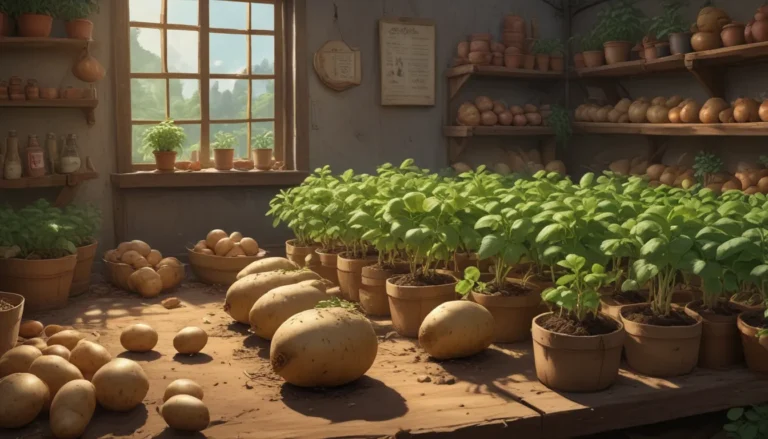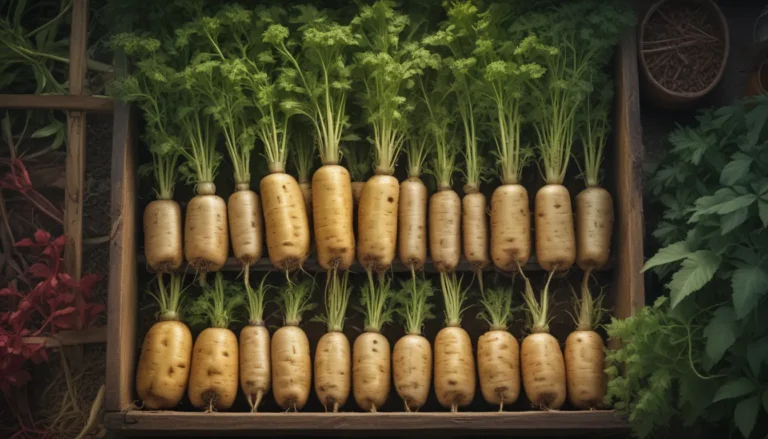The Complete Guide to Successfully Harvesting Carrots

Have you ever grown your own vegetables from seed? If so, you know the sense of accomplishment and satisfaction it brings. Carrots are no exception to this joy of home gardening. Once you’ve successfully grown your own carrots, you may find it hard to go back to store-bought ones. In this comprehensive guide, we will explore the ins and outs of harvesting carrots, from when to pick them to how to ensure a successful harvest.
What You’ll Learn
Today, we’ll cover everything you need to know about harvesting carrots, including:
- How to Harvest: Steps to harvesting your carrots successfully
- When to Harvest: Understanding the best timing to pick your carrots
How to Harvest Carrots
Harvesting carrots involves several steps to ensure a successful and enjoyable experience. Here’s how you can harvest your carrots like a pro:
1. Check the Root Diameter
Before harvesting your carrots, it’s essential to determine if they are the right size. Most carrot varieties are ready for picking in 70-100 days, but this can vary based on the cultivar you are growing. To decide when to harvest your crop, observe the size of the roots. Carrot roots tend to bulge above the soil surface when they are ready for picking. Ideally, you should wait until the roots are about 1/2 inch in diameter for optimal size.
2. Irrigate First
To ensure your carrots are properly hydrated before harvesting, make sure the soil is moist. Jill MacKenzie from the University of Minnesota Extension recommends harvesting after a rainy day or following irrigation. Avoid picking carrots from overly dry or soggy soil, as this can make the process messy.
3. Loosen the Soil
Before pulling up your carrots, loosen the soil around the roots using a hand cultivator, shovel, or hori hori knife. This step is crucial to prevent the roots from breaking off in the soil. Keep your garden tool a safe distance from the roots to avoid accidental damage.
4. Pull Up the Roots
With loosened soil, your carrots should easily come out of the ground. If they resist, further loosen the soil. Avoid washing the roots immediately; instead, brush off excess soil for storage.
5. Remove Tops
Trim the green tops, leaving 1 inch attached to each root. This step prevents the greens from leeching sugars from the roots and aids in long-term storage. Compost or use the greens for cooking.
6. Store in a Cool Location
For short-term storage, clean the roots thoroughly and store in a perforated plastic bag in the fridge. For long-term storage, pack in moist sand in a crate and store in a cool basement or root cellar. Check periodically for signs of spoilage.
When to Harvest Carrots
Knowing when to harvest your carrots is crucial for optimal flavor and freshness. Here are the best times to pick your crop:
Summer
For fresh summer snacks, plant your carrots in early spring and harvest as needed. Handle with care to avoid disturbing the roots.
Fall
Harvest in the fall for the sweetest taste after a couple of frosts. Cooler temperatures signal the plant to store sugar in the roots.
Winter
Store carrots in the ground over winter for outdoor refrigeration. Dig them up before the soil freezes solid to prevent the roots from becoming woody.
The Root of the Matter
Congratulations! You now have the knowledge to harvest your homegrown carrots like a pro. From checking root diameter to proper storage, you are equipped to enjoy the fruits of your labor. Will you enjoy fresh summer snacks or store your harvest for the winter? Let us know your plans in the comments!
For more carrot-growing tips, check out these guides next:
- 9 Causes of Deformed Carrots
- How to Grow Carrots in Containers
- 13 of the Best Carrot Varieties to Grow at Home
- Troubleshooting and Preventing Carrot Growing Problems
With this comprehensive guide, you’ll have everything you need to ensure a successful carrot harvest. Enjoy the fruits of your labor and savor the fresh, homegrown taste of your carrots!





